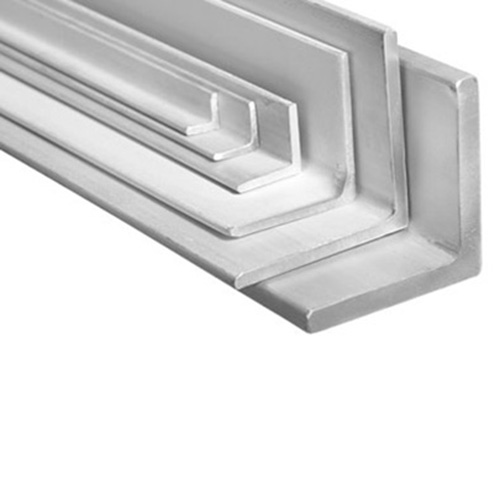
Type 316L Angles, the low carbon version of 316 and are immune from sensitisation (grain boundary carbide precipitation). Thus it is extensively used in heavy gauge welded components (over about 6mm). AISI 316L Angles is also extensively used in the oil and gas and chemical industries for its cost effective corrosion resistance and ease of fabrication & offer higher creep, stress-to-rupture and tensile strength at elevated temperatures, excellent corrosion resistance and strength properties. They are well suited for fabricated or formed applications. Typical uses of 316L Angles include exhaust manifolds, furnace parts, heat exchangers, jet engine parts, pharmaceutical and photographic equipment, valve and pump trim, chemical equipment, digesters, tanks, evaporators, pulp, paper and textile processing equipment, parts exposed to marine atmospheres and tubing. UNS S31603 Angles is an extra-low carbon version of Type 316 that minimizes harmful carbide precipitation due to welding. Consequently, DIN 1.4404 Angles is used when welding is required in order to ensure maximum corrosion resistance.
The austenitic structure also gives these grades excellent toughness, even down to cryogenic temperatures. AISI Angles is more resistant to general corrosion and pitting than conventional nickel chromium stainless steels such as 302-304. Annealing Grade 316L Stainless Steel Angles requires heating to between 1900-2100 Degree F (1038-1149 Degree C), before rapidly quenching. The higher nickel and molybdenum content in this grade allows it to demonstrate better overall corrosion resistant properties than 304, especially with regard to pitting and crevice corrosion in chloride environments. Grade 316L Angles has good corrosion resistance to most chemicals, salts, and acids and molybdenum content helps resistance to marine environments. Compared to chromium-nickel austenitic stainless steels, it offers higher creep, stress to rupture and tensile strength at elevated temperatures. They are also both non-hardenable by heat treatment and can be readily formed and drawn
ASTM A182 316L Angles has the following characteristics: higher creep resistance, excellent formability, rupture and tensile strength at high temperatures, and corrosion and pitting resistance. It is excellent in a range of atmospheric environments and many corrosive media - generally more resistant than 304. This angle is used extensively for weldments where its immunity to carbide precipitation due to welding assures optimum corrosion resistance. Buy 316L Stainless Steel Angles at very competitive price from us.
Stainless Steel 316l Angles Specification :
Dimensions : ASTM, ASME
Standard : ASTM A182, ASME SA182
Material Grade : Stainless Steel 316l (UNS S31603)
Width : 25-100
Length(mm) : Max 6000
Thickness(mm) : 3-10
Equivalent Grades
| STANDARD | WERKSTOFF NR. | UNS | JIS | BS | GOST | AFNOR | EN |
| SS 316l | 1.4404 / 1.4435 | S31603 | SUS 316L | 316S11 / 316S13 | 03Ch17N14M3 / 03Ch17N14M2 | Z3CND17â€11â€02 / Z3CND18â€14â€03 | X2CrNiMo17-12-2 / X2CrNiMo18-14-3 |
Chemical Composition :
| Element | C | Cr | Mn | Ni | P | S | Si |
| SS 316l | 0.08 | 17.0 | 2.00 | 14.0 | 0.045 max | 3.00 max | 0.10 max |
Physical Properties :
| Element | Density, lb/in3 | Melting Point | Tensile Strength | Yield Strength (0.2%Offset) | Elongation |
| SS 316l | 8.0 g/cm3 | 1400 °C (2550 °F) | 485 Min | 170 Min | 40% Min |